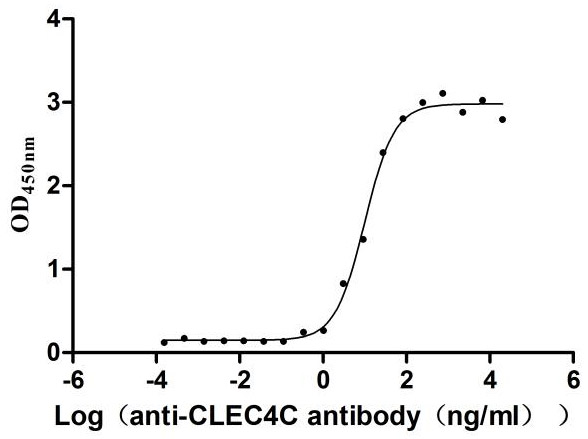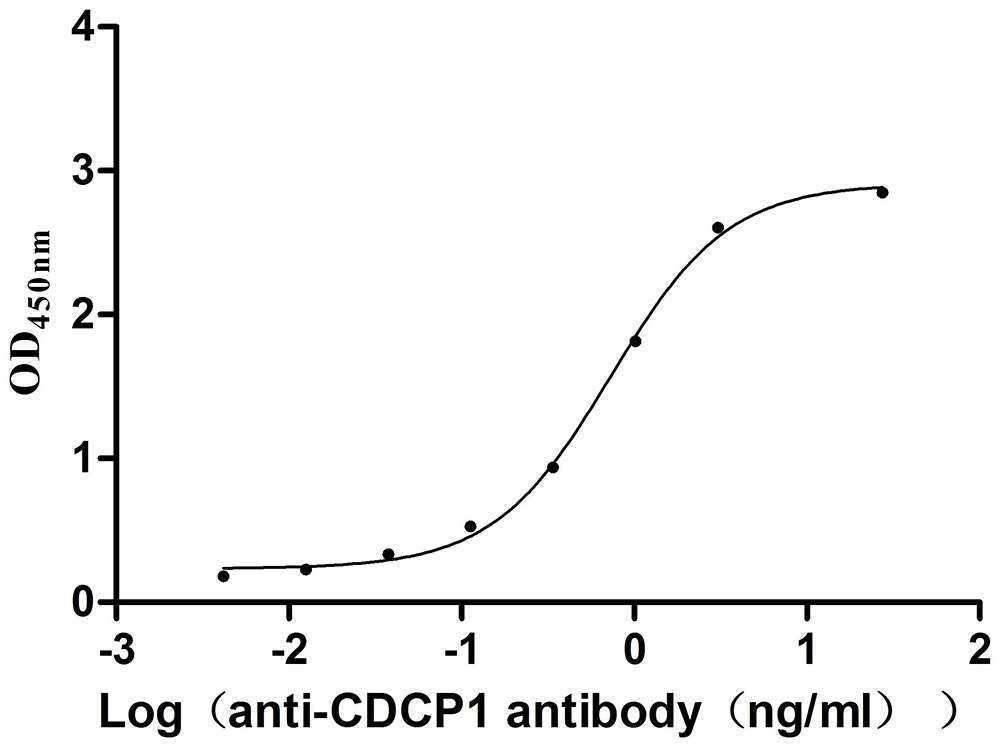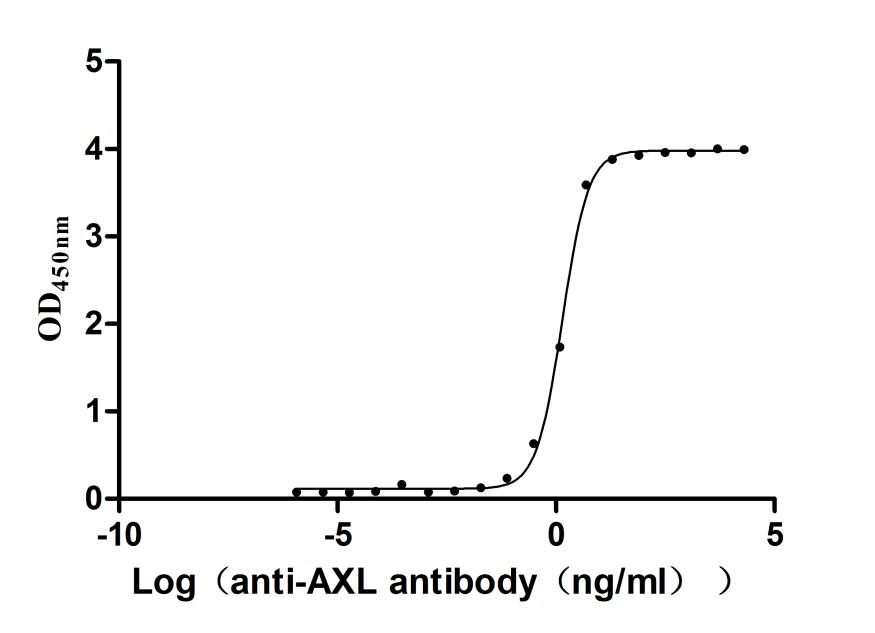Recombinant Mouse Desmoglein-3 (Dsg3), partial (Active)
In Stock-
中文名稱:小鼠Dsg3重組蛋白
-
貨號(hào):CSB-MP007205MOd7
-
規(guī)格:¥1368
-
圖片:
-
(Tris-Glycine gel) Discontinuous SDS-PAGE (reduced) with 5% enrichment gel and 15% separation gel.
-
Activity
Measured by its binding ability in a functional ELISA. Immobilized Mouse Dsg3 at 5 μg/ml can bind Anti-DSG3 recombinant antibody (CSB-RA007205A0HU), the EC50 is 2.624-3.182 μg/ml. Biological Activity Assay
-
-
其他:
產(chǎn)品詳情
-
純度:Greater than 85% as determined by SDS-PAGE.
-
內(nèi)毒素:Less than 1.0 EU/ug as determined by LAL method.
-
生物活性:Measured by its binding ability in a functional ELISA. Immobilized Mouse Dsg3 at 5 μg/mL can bind Anti-DSG3 recombinant antibody (CSB-RA007205A0HU), the EC50 is 2.624-3.182 μg/mL.
-
基因名:
-
Uniprot No.:
-
別名:(Desmoglein-3)(130 kDa pemphigus vulgaris antigen homolog)
-
分子結(jié)構(gòu):
-
種屬:Mus musculus (Mouse)
-
蛋白長度:Partial
-
來源:Mammalian cell
-
分子量:66.0 kDa
-
表達(dá)區(qū)域:50-617aa
-
氨基酸序列EWVKFAKPCREREDNSRRNPIAKITSDFQKNQKITYRISGVGIDQPPFGIFVVDPNNGDINITAIVDREETPSFLITCRALNALGQDVERPLILTVKILDVNDNPPIFSQTIFKGEIEENSASNSLVMILNATDADEPNHMNSKIAFKIVSQEPAGMSMFLISRNTGEVRTLTSSLDREQISSYHLVVSGADNDGTGLSTQCECSIKIKDVNDNFPVLRESQYSARIEENTLNAELLRFQVTDWDEEYTDNWLAVYFFTSGNEGNWFEIETDPRTNEGILKVVKALDYEQVQSMQFSIAVRNKAEFHQSVISQYRVQSTPVTIQVIDVREGISFRPPSKTFTVQRGVSTNKLVGYILGTYQATDEDTGKAASSVRYVLGRNDGGLLVIDSKTAQIKFVKNIDRDSTFIVNKTISAEVLAIDENTGKTSTGTIYVEVPSFNENCPSVVLEKKDICTSSPSVTLSVRTLDRGKYTGPYTVSLEEQPLKLPVMWTITTLNATSALLQAQQQVSPGVYNVPVIVKDNQDGLCDTPESLTLTVCQCDDRSMCRAPIPSREPNTYGESSWRLGP
-
蛋白標(biāo)簽:C-terminal 10xHis-tagged
-
產(chǎn)品提供形式:Lyophilized powder
Note: We will preferentially ship the format that we have in stock, however, if you have any special requirement for the format, please remark your requirement when placing the order, we will prepare according to your demand. -
緩沖液:Lyophilized from a 0.2 μm filtered 20 mM Tris-HCl, 0.5 M NaCl, 6% Trehalose, pH 8.0
-
復(fù)溶:We recommend that this vial be briefly centrifuged prior to opening to bring the contents to the bottom. Please reconstitute protein in deionized sterile water to a concentration of 0.1-1.0 mg/mL.We recommend to add 5-50% of glycerol (final concentration) and aliquot for long-term storage at -20°C/-80°C. Our default final concentration of glycerol is 50%. Customers could use it as reference.
-
儲(chǔ)存條件:Store at -20°C/-80°C upon receipt, aliquoting is necessary for mutiple use. Avoid repeated freeze-thaw cycles.
-
保質(zhì)期:The shelf life is related to many factors, storage state, buffer ingredients, storage temperature and the stability of the protein itself.
Generally, the shelf life of liquid form is 6 months at -20°C/-80°C. The shelf life of lyophilized form is 12 months at -20°C/-80°C. -
貨期:Basically, we can dispatch the products out in 3-7 working days after receiving your orders. Delivery time may differ from different purchasing way or location, please kindly consult your local distributors for specific delivery time.
-
注意事項(xiàng):Repeated freezing and thawing is not recommended. Store working aliquots at 4°C for up to one week.
-
產(chǎn)品描述:
A DNA fragment encoding the amino acids 50-617 of the mouse Dsg3 was expressed in the mammalian cells and tags indicated with 10xHis at the C-terminus. The product is the partial length recombinant mouse Dsg3 protein. Its purity reaches up to 88% determined by SDS-PAGE. On the gel, this Dsg3 protein showed a molecular weight of about 66.3 kDa. The LAL method determines that the endotoxin content of the Dsg3 protein is less than 1.0 EU/ug. This Dsg3 protein is also biologically active, and its activity has been validated through a functional ELISA. It can bind to the anti-Dsg3 antibody with the EC50 of 2.624-3.182 μg/mL. And it is available now.
Dsg3, a member of the desmosomal cadherin family, is exclusively expressed in stratified epithelia. It has been identified as one of the autoantigens in the autoimmune blistering skin disease pemphigus Vulgaris (PV). Dsg3 participates in the keratinocyte cell-cell adhesion and the regulation of various signaling pathways involved in the progression and metastasis of cancer.
-
Datasheet & COA:Please contact us to get it.
相關(guān)產(chǎn)品
靶點(diǎn)詳情
-
功能:Component of intercellular desmosome junctions. Involved in the interaction of plaque proteins and intermediate filaments mediating cell-cell adhesion.
-
基因功能參考文獻(xiàn):
- flotillin has a role in desmosomal adhesion and Pemphigus vulgaris-like localisation of desmoglein-3 in human keratinocytes PMID: 27346727
- Desmoglein 3 deficiency in mice leads to a phenotype characterized by cyclic alopecia in addition to the dramatic skin and mucocutaneous acantholysis observed in pemphigus patients. PMID: 25542773
- Dsg3, via p38 MAPK, regulates the spatial distribution of the keratin filament network and stabilizes cell adhesion. PMID: 24782306
- Squamous metaplasia after pulmonary epithelial injury may play a crucial role in redirecting the skin-specific autoimmune reaction to the lungs in paraneoplastic pemphigus (PNP). PMID: 23729442
- Dsg3 deficiency results in perturbation of the desmosomal network at the transcriptional, translational, and interaction level, kinase activation, proteinase-mediated degradation, and hyper-adhesion. (Review) PMID: 23368972
- Thus, Dsg3 does not display a clear function as a tumor suppressor in these mouse skin cancer models PMID: 23185521
- IgG and IgM antibodies against desmoglein 3 have a pathogenic role in blister formation in pemphigus vulgaris PMID: 21718682
- the adult passive transfer mouse model is ideally suited for detailed studies of Dsg3 antibody-mediated signaling in adult skin. PMID: 21956125
- These data indicate a contribution of Dsg depletion to pemphigus vulgaris pathogenesis dependent on Ca(2+)-induced differentiation. PMID: 21864491
- Aire has an important role in Dsg3 expression as well as in selection of T cells that help B cells to produce anti-Dsg3 IgG in thymus. PMID: 21048786
- Loss of tolerance against Dsg3 in both B and T cells is important for the development of autoimmune state of pemphigus vulgaris. PMID: 11857336
- Patchy hair loss in pemphigus vulgaris model mice as in Dsg3(-/-) mice. Ultrastructure of telogen hair follicles same as PV model mice and Dsg3(-/-) mice. Anti-Dsg3 autoantibodies interfere with cell-cell adhesion of keratinocytes in PV model mice. PMID: 12373337
- perturbation of desmoglein 3 found in the Dsg3bal-Pas mice resulted in disadhesion of keratinocytes manifested with blistering phenotype. PMID: 12485423
- anti-Dsg3 IgG antibodies can directly access Dsg3 present in desmosomes in vivo and cause the subsequent desmosome separation that leads to blister formation in pemphigus vulgaris PMID: 15140217
- In pemphigus vulgaris antibodies were dominantly raised against middle to C-terminal extracellular domains of mouse Dsg3 where amino acid sequences are less conserved among desmoglein isoforms. Those antibodies may also be involved in blister formation. PMID: 15265525
- importance of the companion layer, and particularly the Dsg1 and Dsg3 in this layer, in anchoring the anagen hair to the follicle. PMID: 15482466
- Northern Blot analysis of wild-type and Plucked (pk) mutant mice indicates that expression of both desmoglein 1 (Dsg1) and desmoglein 3 (Dsg3) is up-regulated in the skin of mutant pk mice PMID: 15629430
- skin-specific Dsg3 serves as an autoantigen in chronic skin inflammatory diseases accompanied by mast cell degranulation, including both murine systemic lupus erythematosus and other autoinflammatory diseases PMID: 16492738
- Reduction of Dsg3 might be relevant to blister formation in pemphigus vulgaris. PMID: 17431647
- distinct T cell responses could be switched after active immunization combined with different adjuvants, resulting in distinct anti-Dsg3 antibody isotypes with different pathogenic activities in Pemphigus disease development PMID: 18634826
- Subcellular localization of desmosomal components is different between desmoglein3 knockout mice and pemphigus vulgaris model mice. PMID: 19525093
顯示更多
收起更多
-
亞細(xì)胞定位:Cell membrane; Single-pass type I membrane protein. Cell junction, desmosome.
-
組織特異性:Expressed in epidermis.
-
數(shù)據(jù)庫鏈接:
Most popular with customers
-
Recombinant Human Receptor tyrosine-protein kinase erbB-2 (ERBB2), partial (Active)
Express system: Mammalian cell
Species: Homo sapiens (Human)
-
Recombinant Mouse Tyrosine-protein kinase Mer (Mertk), partial (Active)
Express system: Mammalian cell
Species: Mus musculus (Mouse)
-
Recombinant Human Epithelial discoidin domain-containing receptor 1 (DDR1), partial (Active)
Express system: Mammalian cell
Species: Homo sapiens (Human)
-
Recombinant Human Claudin-6 (CLDN6)-VLPs (Active)
Express system: Mammalian cell
Species: Homo sapiens (Human)
-
Recombinant Human C-type lectin domain family 4 member C (CLEC4C), partial (Active)
Express system: Mammalian cell
Species: Homo sapiens (Human)
-
Recombinant Mouse CUB domain-containing protein 1 (Cdcp1), partial (Active)
Express system: Mammalian cell
Species: Mus musculus (Mouse)
-
Recombinant Human Tyrosine-protein kinase receptor UFO(AXL),partial (Active)
Express system: Mammalian cell
Species: Homo sapiens (Human)

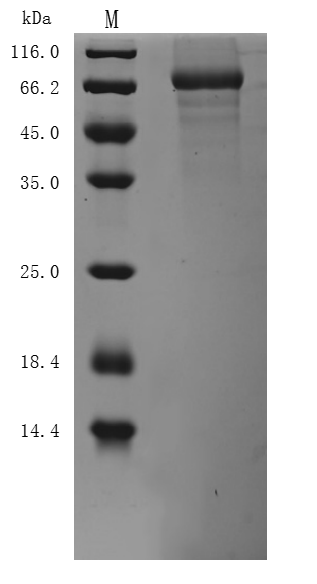
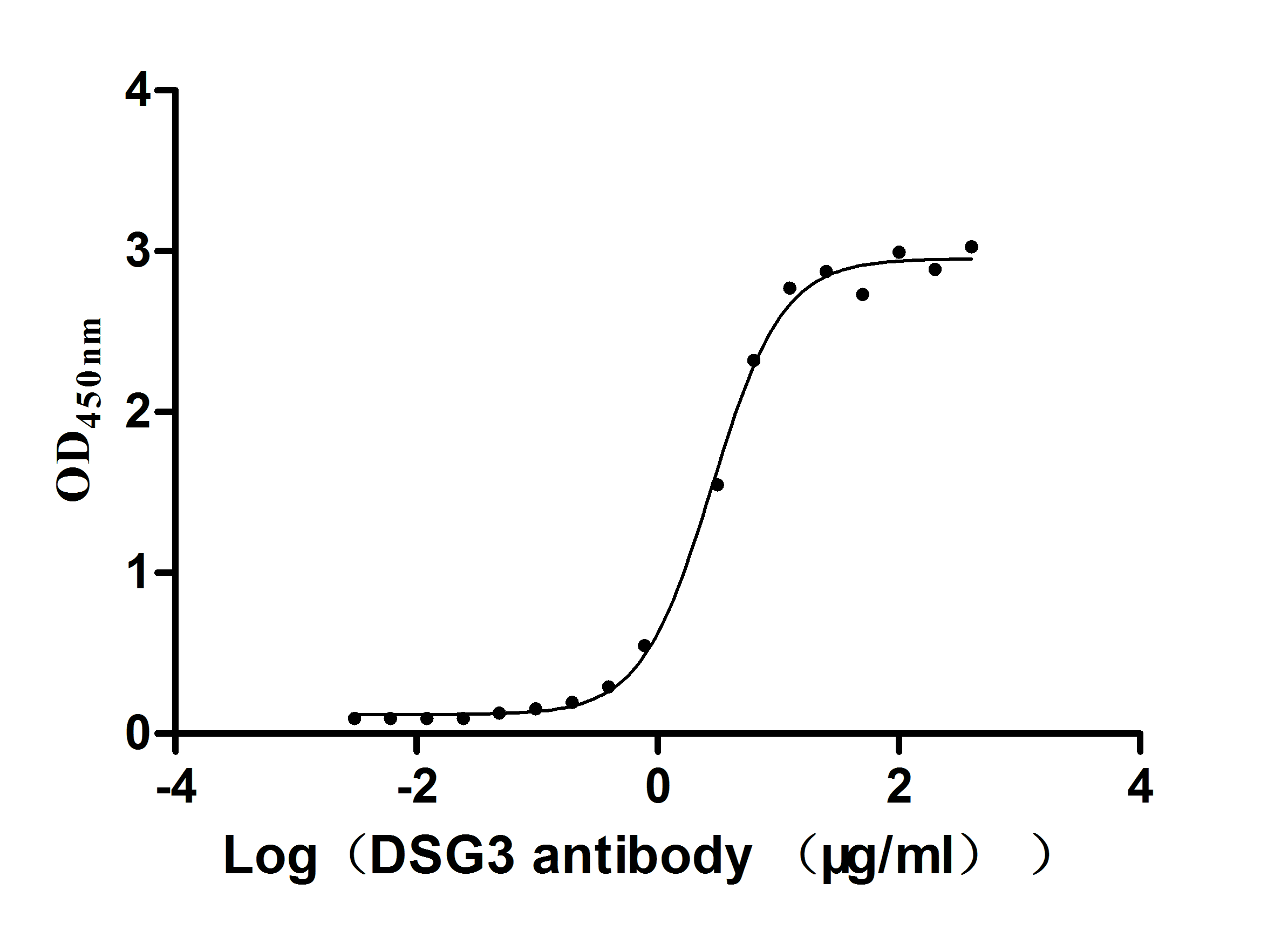



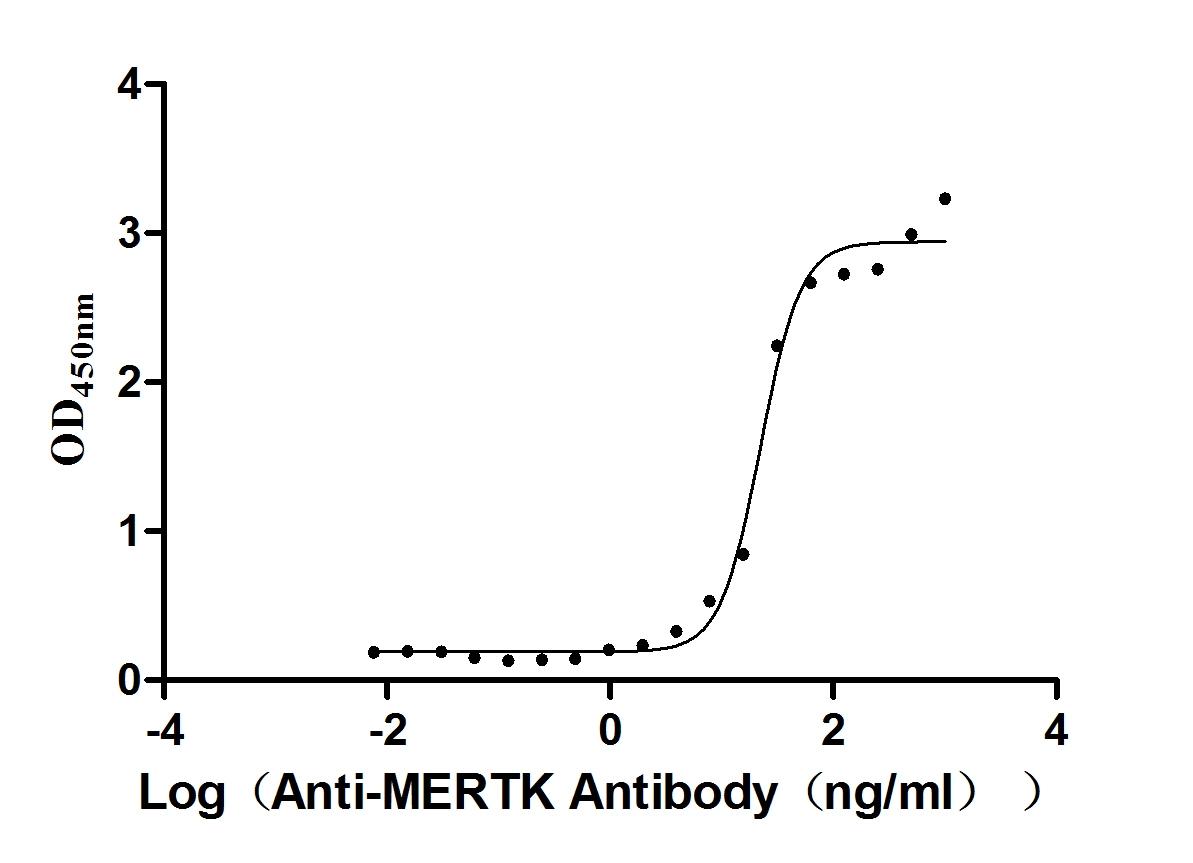
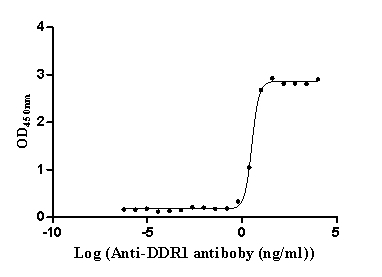
-AC1.jpg)
